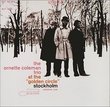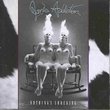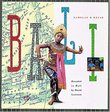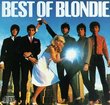| All Artists: Ornette Coleman Title: Dancing in Your Head Members Wishing: 2 Total Copies: 0 Label: Polygram Records Release Date: 4/18/2000 Genres: Jazz, Pop, R&B Styles: Avant Garde & Free Jazz, Funk Number of Discs: 1 SwapaCD Credits: 1 UPC: 731454351928 |
Search - Ornette Coleman :: Dancing in Your Head
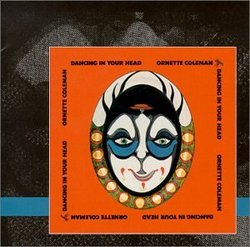 | Ornette Coleman Dancing in Your Head Genres: Jazz, Pop, R&B
Limited edition Japanese pressing has been remastered and includes a bonus track. A&M. 2005. |
Larger Image |
CD DetailsSynopsis
Album Description Limited edition Japanese pressing has been remastered and includes a bonus track. A&M. 2005. Similar CDs
Similarly Requested CDs
|
CD ReviewsThe Dancing Gets Deep In Your Head! Christopher Forbes | Brooklyn,, NY | 08/29/2006 (5 out of 5 stars) "I still remember when I first heard this record in 1976, shortly after it's release. I had just gotten into Ornette's early quartet and trio recordings and was mourning what I thought was his permanent retirement from recording. I was listening to the late night jazz program on Minnesota public radio and tuned in to this wild funky music. I was immediately captured by the funky beat, the swirling polyrhythms of the guitars and the astounding melodic bass playing. And overtop of it all was this marvelous saxophone. I kept thinking, "jeez (it was Minnesota after all) this guy sounds just like Ornette. But with a funk band!" Imagine my surprise when I found out that indeed, the plastic-altoed Texas master was back recording...and with such a radical conception. For me, Prime Time was and is a revelation in the music of the seventies. Though funk and free jazz have many commonalities and the ties between them go back at least to Archie Shepp's and Pharoah Saunders' Impulse albums, the relationship is mostly unnoticed. Miles' early jazz-rock experiments were largely free jazz albums with funky beats. The Art Ensemble of Chicago recorded some potent free-funk in 1968 in Paris of all places. And groups like EWF and especially P-Funk often had extended moments in their jams where the improvisation lost touch with earth for a minute or two and floated freely into the stratosphere. But by 1976 much of the initial creative fever in jazz-funk had died...Miles was retired, Herbie's Headhunters were moving more to disco, and most of the early promise of the movement on the jazz side was sliding towards what would become "smooth jazz" a decade later. Then Ornette came on the scene with this album and with his translation of the "harmelodic" principal to jazz-funk and a whole new generation of the music was born. Harmelodics is Coleman's much vaunted and little understood idea of how to organize free jazz music. Basically stated, it is an idea that the counterpoint of melodies creates constantly shifting harmonic dissonances, which, along with the polyrhythmic denseness of the rhythm section, creates a rising tension that substitutes for traditional harmonic progression. (It's couched in much more mystical language which serves to obscure the concept to the point where even some of the musicians who've played with him remain confused by it. One of my friends, who actually plays on this album, calls himself a "victim of harmelodics") Applying this principle to jazz-funk creates a sound unlike anything else...it's often dense and polytonal, but as is the case for all of Coleman's free jazz, it's still deeply rooted in the blues and Texas R and B. Dominated by two long takes of the same melody, "Theme from a Symphony" which is a favorite Coleman tune that has an almost childlike sing-song quality, the music is a dense jam that at times resembles American funk and at other times sounds like Nigerian highlife gone sharply left. Coleman embraces the spirit of real funk here, which at heart is an African-based spirit, in which the individual players express their individuality and yet work together to create a marvelous collective stew. This African inspiration becomes more obvious on the two tracks of improvisation with the Master Musicians of Jajouka. Mixing wild free improv over the ecstatic Sufi music creates an almost trance-like feel, though neither track truly gets going before it's time to stop. They are more interesting as experiments and as signposts in Coleman's intellectual development than as successful tracks in their own right. The electric group on this album, which was to become Prime Time, went on to release several very successful albums, perhaps even more successful than Dancing In Your Head. However this album is essential because of the ground it broke when it came out. Coleman and Prime Time had an electrifying effect on the downtown New York scene when this music started getting around the lofts. Its influence can be felt in the work of Blood Ulmer, Joseph Bowie's Defunkt and any number of Bill Laswell projects. But its biggest impact was on the burgeoning No Wave movement in the punk world. Teenaged Jesus and the Jerks cited Coleman as a major influence, and James Chance actually sounded like a more punky and less talented Ornette when he blew on his saxophone. And with the rise of the neo-no-wave groups out of Chicago the influence continues. Hopefully, with its re-release, Dancing In Your Head will reach an entirely new generation of musicians and continue the party well into the new century. Chris Forbes" Ornette plugs in. Michael Stack | North Chelmsford, MA USA | 08/04/2005 (4 out of 5 stars) "The mid 1970s were a time of experimentation for free jazz pioneer Ornette Coleman. It had been quite a while since he had turned the world on its head with his legendary "The Shape of Jazz to Come", and his influence throughout jazz was widely acknowledged, even by some who had previously scorned him. Coleman had become somewhat more eccentric in his working habits, performing and recording less frequently. As such, it seems that looking back some ideas were fully formed upon recording when a large time of development took place. Two of the great experiments from Coleman during this period was his work with musicians in Morocco (the Master Musicians of Joujouka) and his experimentation with electric instruments in his working band. This record brings together recordings of those two experiments. The electric band material dominates the record-- two lengthy tracks, two takes of the same piece, the ecstatic "Theme From a Symphony" (originally "The Good Life" on "Skies of America" and "School Work" on "Science Fiction" and later referred to simply as the title of this album, "Dancing in Your Head"). The takes both feature Coleman's shrill sax doubled by guitar stating the theme and fluid and melodic bass playing from Jamaaladeen Tacuma that certainly is enough to secure his place among the greats. But there's differences too-- the first variation is significantly longer, with Coleman occupying almost all the solo space (on the second variation, he shares with a fuzz guitar). Ronald Shannon Jackson's drumming is quite different on the two-- looser and more open on variation two, although in both he quotes the theme during his performance to great effect. One thing that's definite, if you don't care for the theme, you're going to hate this piece-- it's reprised several times, and its sing-song quality is often described as grating (I love it, personally, but I also rank "Jean-Pierre" among Miles Davis' great compositions). The session with the Master Musicians of Joujouka is a bit different-- Coleman and Robert Palmer (on clarinet) wail away on top of shifting backgrounds. The pieces are certainly interesting, but they've never been something I've been particularly enamoured with. The remaster is augmented by an alternate take of "Midnight Sunrise" (the piece with the Master Musicians), and features crisp, clean sound that, particularly in the electric session, is well appreciated. A word of warning-- this record is very short-- even augmented by an alternate its less than 40 minutes long. Lack of variation and brevity makes this one not quite as essential as much of Coleman's other material, but nonetheless it is a critical recording in his canon. Highly recommended." I luv it I am the famous Ralph Buttawitz | USA | 10/05/2009 (4 out of 5 stars) "its the first album that I ever heard that sounds like people are falling down the stairs in the statue of liberty"
|

 Track Listings (4) - Disc #1
Track Listings (4) - Disc #1
